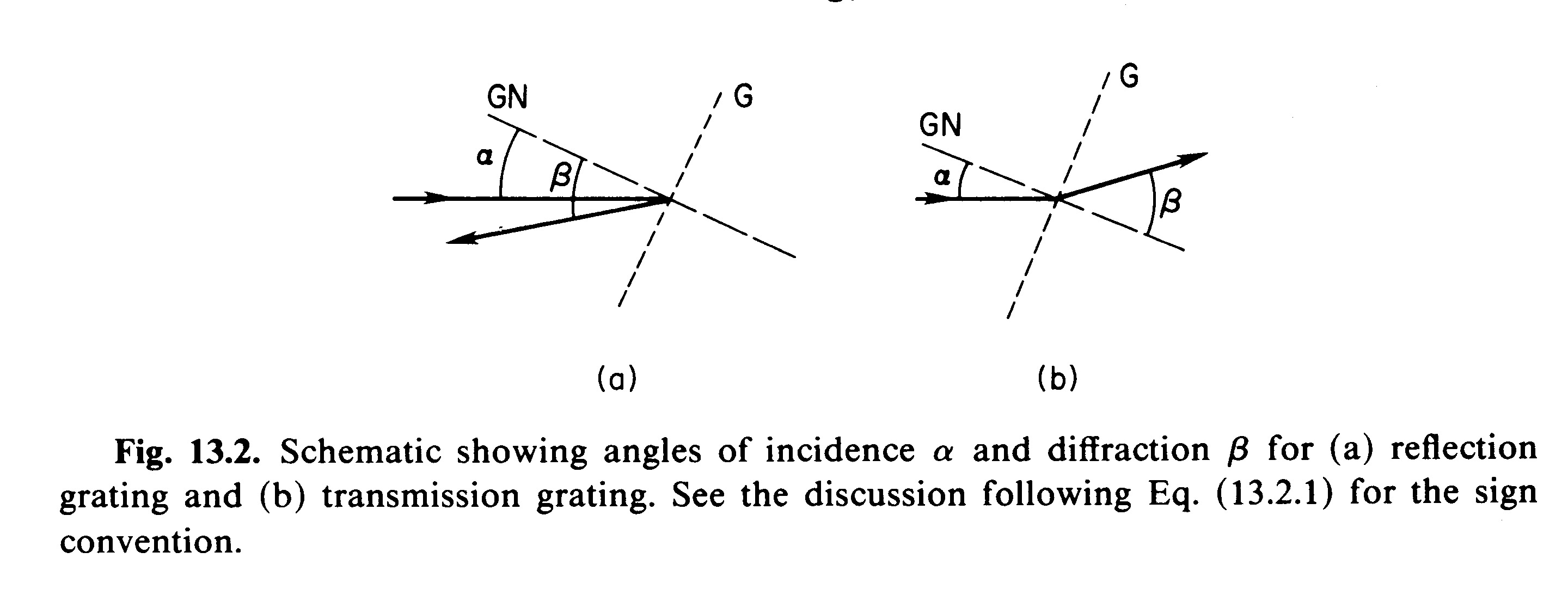Prisms
Perhaps the simplest conceptual dispersing element is a prism, which
disperses light because the index of refraction of many glasses is a
function of wavelength. From Snell's law, one finds that:


Gratings
Diffraction gratings work using the principle of multi-slit interference. A diffraction grating is just an optical element with multiple grooves, or slits. Diffraction gratings may be either transmissive or reflective. Bright regions are formed where light of a given wavelength from the different slits constructive interferes.

The dispersion of a grating can then be derived:
Typical gratings have groove densities between 300 and 1200 lines/mm. Echelle gratings have groove densities between 30 and 300 lines/mm.
One can derive the anamorphic magnification for a grating by looking at
how ![]() changes as
changes as ![]() changes at fixed
changes at fixed ![]() . One finds
that:
. One finds
that:


Note that light from different orders can fall at the same location, leading
to great confusion! This occurs when
One can compare grating operating in low order, those operating in high order, and prisms, and one finds that higher resolution is available from grating, and that echelles offer higher resolution than typical low order gratings.
We can also discuss grating efficiency, the fraction of incident light which is directed into a given diffracted order. One finds that for a simple grating, less light is diffracted into higher orders. However, one can construct a grating which can maximize the light put into any desired order by blazing the grating, which involves tilting each facet of the grating by some blaze angle. The blaze angle is chosen to maximize the efficiency at some particular wavelength in some particular order; it is set so that the angle of diffraction for this order and wavelength is equal to the angle of reflection from the grating surface.
